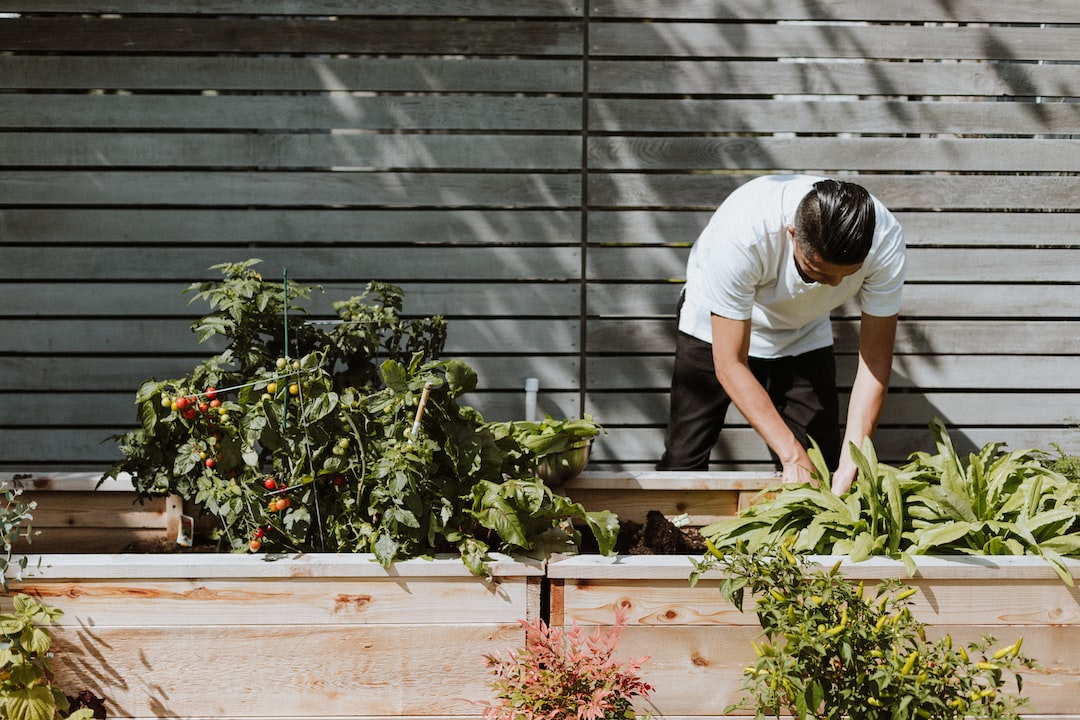The Importance of Sunlight for Tomatoes: How Many Hours of Sun Do They Really Need?

Sunlight is a crucial factor in the growth and development of tomato plants. As a source of energy, sunlight plays a vital role in photosynthesis, the process by which plants convert light into chemical energy to fuel their growth. In addition to providing energy, sunlight also affects various aspects of tomato growth, including the size, color, and taste of the fruit. Understanding the optimal amount of sunlight for tomatoes and how to maximize sunlight exposure can help gardeners and farmers achieve higher yields and better quality tomatoes.
Key Takeaways
- Sunlight is crucial for the growth and development of tomato plants.
- The optimal amount of sunlight for tomatoes is 6-8 hours per day.
- Sunlight exposure affects tomato yield and quality, with too little or too much sunlight leading to negative effects.
- Sunlight exposure can be measured using a light meter or by observing the plant’s growth patterns.
- Maximizing sunlight for tomato crops can be achieved through proper planting, pruning, and positioning of plants.
The Role of Sunlight in Tomato Growth
Sunlight is essential for tomato plants as it provides the energy needed for photosynthesis. During photosynthesis, plants convert light energy into chemical energy in the form of glucose, which is used to fuel various metabolic processes. This energy is crucial for plant growth, including the development of leaves, stems, and roots.
In addition to providing energy, sunlight also affects other aspects of tomato growth and development. For example, sunlight influences the size and shape of tomato plants. Tomatoes grown in full sunlight tend to be larger and have more compact growth habits compared to those grown in shaded areas.
Furthermore, sunlight plays a role in determining the color and taste of tomatoes. Sunlight exposure affects the production of pigments such as lycopene and carotenoids, which give tomatoes their red and yellow colors. Additionally, sunlight exposure influences the sugar content and flavor profile of tomatoes. Tomatoes that receive ample sunlight tend to be sweeter and more flavorful compared to those grown in shaded areas.
Understanding the Optimal Amount of Sunlight for Tomatoes
While sunlight is essential for tomato growth, it is important to understand the optimal amount of sunlight for these plants. Tomato plants generally require at least 6-8 hours of direct sunlight per day to thrive. However, this can vary depending on factors such as location and time of year.
The ideal amount of sunlight for tomato plants can be influenced by the geographical location. In regions with hot climates, excessive sunlight exposure can lead to sunburn and heat stress in tomato plants. In contrast, in cooler regions, insufficient sunlight exposure can result in slower growth and lower yields.
The time of year also affects the amount of sunlight available for tomato plants. During the summer months, when the days are longer, tomato plants have more access to sunlight. However, in the winter months, when the days are shorter, tomato plants may receive less sunlight. This can be addressed by using techniques such as providing supplemental lighting or growing tomatoes indoors.
The Impact of Sunlight on Tomato Yield and Quality
| Amount of Sunlight | Tomato Yield | Tomato Quality |
|---|---|---|
| Full Sun | High | Sweet and Juicy |
| Partial Sun | Moderate | Less Sweet and Juicy |
| Shade | Low | Watery and Less Flavorful |
Sunlight has a significant impact on the yield and quality of tomatoes. Insufficient or excessive sunlight exposure can lead to various issues that affect tomato plants’ productivity and fruit quality.
Insufficient sunlight exposure can result in stunted growth and lower yields. Without enough sunlight, tomato plants may struggle to produce enough energy for photosynthesis, leading to slower growth rates. This can result in smaller fruits and fewer overall tomatoes.
On the other hand, excessive sunlight exposure can also be detrimental to tomato plants. Too much direct sunlight can cause sunburn on the leaves and fruits, leading to tissue damage and reduced productivity. Additionally, excessive heat from intense sunlight can cause heat stress in tomato plants, resulting in wilting and reduced fruit set.
How to Measure Sunlight Exposure for Your Tomato Plants
Accurately measuring sunlight exposure is crucial for optimizing tomato growth. There are several tools and methods available to measure sunlight exposure for tomato plants.
One common tool used to measure sunlight exposure is a light meter or lux meter. These devices measure the intensity of light in lux units, which can help determine if tomato plants are receiving sufficient light levels.
Another method for measuring sunlight exposure is by using a smartphone app that utilizes the device’s camera sensor to measure light intensity. These apps can provide a rough estimate of the light levels and help determine if tomato plants are receiving adequate sunlight.
It is important to measure sunlight exposure at different times of the day and in different areas of the garden to get a comprehensive understanding of the light conditions. This can help identify areas with insufficient or excessive sunlight exposure and allow for adjustments to maximize sunlight for tomato plants.
Tips for Maximizing Sunlight for Your Tomato Crop

There are several strategies that can be employed to maximize sunlight exposure for tomato plants.
Firstly, it is important to choose a suitable location for planting tomatoes. Select an area that receives full sun for at least 6-8 hours per day. Avoid planting tomatoes in shaded areas or near tall structures that may cast shadows on the plants.
Secondly, proper spacing between tomato plants is crucial to ensure each plant receives adequate sunlight. Overcrowding can lead to shading and competition for light, resulting in reduced growth and yields. Follow the recommended spacing guidelines for the specific tomato variety being grown.
Additionally, pruning tomato plants can help maximize sunlight exposure. Remove any lower leaves that are blocking sunlight from reaching the lower parts of the plant. This allows for better air circulation and light penetration, promoting overall plant health and productivity.
The Dangers of Too Much or Too Little Sunlight for Tomatoes
Both insufficient and excessive sunlight exposure can pose risks to tomato plants.
Insufficient sunlight exposure can lead to weak and spindly growth, as well as reduced fruit production. Tomato plants that do not receive enough sunlight may have pale green leaves and elongated stems. They may also produce fewer flowers and fruits.
Excessive sunlight exposure, on the other hand, can cause sunburn and heat stress in tomato plants. Sunburn appears as yellow or white patches on the leaves and fruits, which can eventually turn brown and become necrotic. Heat stress can cause wilting, leaf curling, and reduced fruit set.
It is important to monitor tomato plants for signs of insufficient or excessive sunlight exposure and take appropriate measures to address the issue. This may include providing shade during the hottest part of the day or using reflective mulch to redirect sunlight onto the plants.
The Relationship Between Sunlight and Tomato Nutrient Content
Sunlight exposure also affects the nutrient content of tomatoes. Different wavelengths of light can influence the production of specific compounds in tomatoes, including vitamins, antioxidants, and pigments.
For example, sunlight exposure is crucial for the production of lycopene, a powerful antioxidant that gives tomatoes their red color. Lycopene has been linked to various health benefits, including reducing the risk of certain types of cancer and promoting heart health.
Sunlight exposure also affects the production of other antioxidants, such as vitamin C and beta-carotene. These compounds contribute to the nutritional value of tomatoes and are important for overall health and well-being.
To optimize the nutrient content of tomatoes, it is important to provide adequate sunlight exposure. This can be achieved by ensuring tomato plants receive sufficient direct sunlight and by using techniques such as reflective mulch or supplemental lighting.
Sunlight Requirements for Different Tomato Varieties
Different tomato varieties have varying sunlight requirements. Some varieties are more tolerant of shade or partial sun, while others require full sun to thrive.
Indeterminate tomato varieties, which continue to grow and produce fruit throughout the season, generally require full sun for optimal growth. These varieties benefit from at least 6-8 hours of direct sunlight per day.
Determinate tomato varieties, which have a more compact growth habit and produce fruit within a shorter period, may be more tolerant of partial sun or shade. However, even these varieties benefit from at least 4-6 hours of direct sunlight per day to ensure good yields and fruit quality.
It is important to consider the specific requirements of the tomato variety being grown and adjust sunlight exposure accordingly. This can help maximize the potential of each variety and ensure optimal growth and productivity.
How to Provide Adequate Sunlight in Different Growing Environments
In some situations, providing adequate sunlight exposure for tomato plants can be challenging. This is especially true in indoor or shaded growing environments. However, there are strategies that can be employed to overcome these challenges and ensure tomato plants receive sufficient light.
In indoor growing environments, such as greenhouses or grow rooms, supplemental lighting can be used to provide the necessary light levels for tomato plants. LED grow lights are a popular choice for indoor gardening, as they can provide the specific wavelengths of light needed for photosynthesis.
When growing tomatoes in shaded areas, such as under trees or near tall structures, it may be necessary to prune surrounding vegetation to allow more sunlight to reach the plants. Additionally, reflective mulch or white fabric can be used to redirect sunlight onto the plants and increase light levels.
The Benefits of Supplemental Lighting for Tomato Plants
Supplemental lighting can offer several benefits for tomato plants, especially in situations where natural sunlight is limited.
Firstly, supplemental lighting can extend the growing season for tomatoes. By providing additional light during the winter months or in regions with shorter days, tomato plants can continue to grow and produce fruit year-round.
Secondly, supplemental lighting can help increase yields and improve fruit quality. By providing consistent and optimal light levels, supplemental lighting ensures that tomato plants have access to the energy needed for photosynthesis. This can result in larger fruits, higher yields, and better overall quality.
Lastly, supplemental lighting allows for greater control over the growth and development of tomato plants. By adjusting the intensity and duration of light exposure, it is possible to manipulate various aspects of plant growth, such as flowering and fruiting.
Sunlight is a critical factor in the growth and development of tomato plants. It provides the energy needed for photosynthesis and influences various aspects of tomato growth, including size, color, and taste. Understanding the optimal amount of sunlight for tomatoes and how to maximize sunlight exposure can help gardeners and farmers achieve higher yields and better quality tomatoes. By measuring sunlight exposure, employing strategies to maximize sunlight, and addressing issues related to insufficient or excessive sunlight exposure, it is possible to optimize tomato growth and productivity.
If you’re wondering how many hours of sun tomatoes need to thrive, you’ll find a comprehensive answer in this informative article from Lawn World. Understanding the sunlight requirements of tomatoes is crucial for their growth and productivity. To learn more about this topic, check out the article on how many hours of sun do tomatoes need on Lawn World’s website.



